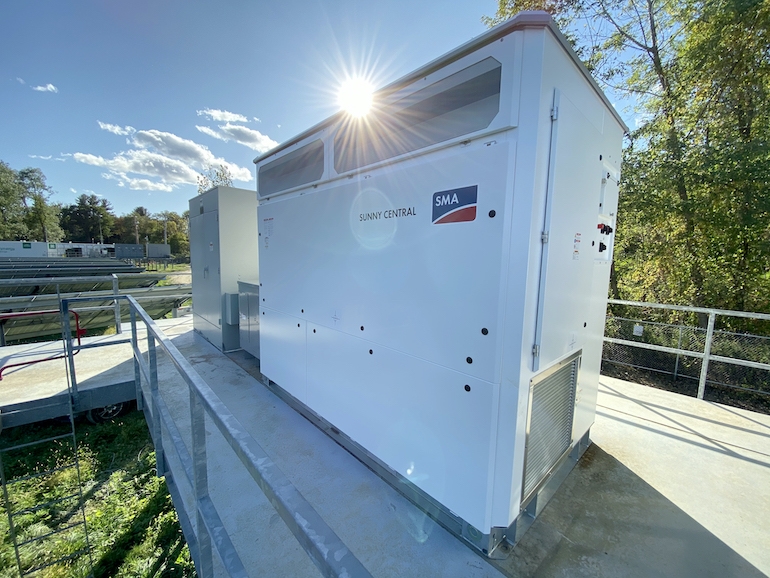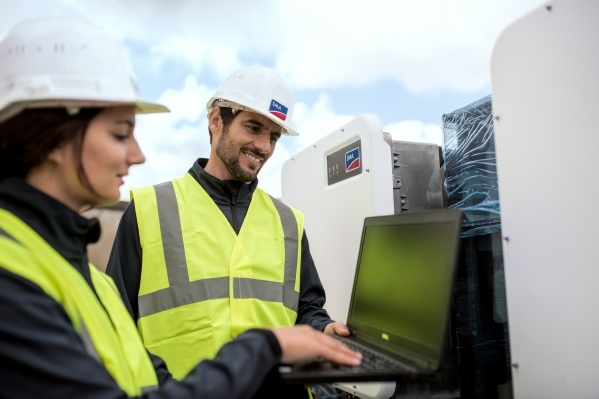When to Repower Aging Utility-Scale Solar Projects

The new year has brought renewed attention to strategic management of solar assets. The repowering expert for SMA, Thorsten Hoefer, worked with Solar Power World to help readers understand when the right time is to repower aging utility-scale solar assets. Here is an interesting article originally published by Solar Power World on November 2020.
As projects inevitably age, customers often ask, “When is the right time to repower?” The truth is, depending on the project circumstances, the answer might change. Here are some considerations to help project owners decide whether it is the right time to repower an aging solar project.
In most cases in the utility market, asset owners choose to repower when plants become non-operational, there are higher than normal repair costs or critical technology fails. Less frequently, system operators may repower when they notice the power output has declined relative to expected projections. The strategic choice is to consider cost and urgency.
The very first step, before even considering repowering as a viable option, is to check whether the system can be repaired within a timely manner and at an acceptable cost. A growing number of specialized companies offer service, spare parts and repairs to get systems back online.
When repairs become costly, start happening frequently or include long lead times, it is time to look at alternatives. Repowering is one option to explore.
Any repowering evaluation will consider modules, trackers, inverters and other balance-of-system components. Focusing on the inverter is important as this often represents the greatest opportunity for performance remediation. It is the center of the nuanced electrical componentry. The central inverter is responsible for the power conversion, grid services, control and often monitoring. It also communicates where other issues occur. As the heartbeat of the system, it generally necessitates the most intensive attention.
Evaluate the Investment
The next step in evaluating repowering is to analyze the investment. This will mainly be affected by the changes and modifications required to adopt the new inverter on site.
When it comes to central inverters, the technology has changed significantly in the last decade, so a designer’s selection must be nuanced. In situations where the technical specifications and physical characteristics match, it may simply require some minor adjustments to the central inverter on site. For example, when the power, MPP-window, AC-voltage, AC-current, size and connection area of the new inverter generally match the existing equipment, the overall investment is typically reasonable.
Projects where changes are limited to the DC- and AC- connection are straightforward. The total investment is quickly understood and can be used to calculate the production gain over time. Additional costs for engineering, permits and lead time are all predictable.
When no easy replacements are available, however, things get more complicated. Sites where this is true are usually those where the MPP-voltage of the modules does not match the MPPT-window of the inverter (e.g., 600-VDC systems vs. 1,000-VDC inverters). Sometimes, an unusual AC voltage causes more complexity for inverter replacement. In those cases, there are solutions available, but the solutions lead to a larger investment.
In addition to the standard replacement cost, other costs could stem from a larger amount of work. Equipment modification may require a field certification — all of which add time and money. That, in turn, means a higher investment.
Examine Costs vs. Benefits
Taking all the above details into consideration, a repowering project can pay off as quickly as a couple of months or take up to several years. It really depends on the value of the energy produced. The most impactful element of the decision may be based on the use and age of the PV system.
For a utility project, financial projections are paramount. Systems with a power purchase agreement older than 10 years may have a better financial outlook than some younger systems due to higher contractual values for the energy produced. However, that does not mean repowering is only viable in older systems. Newer projects have a longer runtime ahead of them, which allows for a longer payback period, provided the changes are made earlier rather than later.
Make a Plan Early
To guarantee a successful return over the lifetime of the PV project, it’s best to prepare for a catastrophic failure by having, at minimum, a rough plan in place and adequate financial reserves to replace primary components like an inverter or transformer. Having a repowering plan as part of an overall operations and maintenance strategy can save a huge amount of time, money and anxiety if a problem happens. The best time to develop this strategic approach is during the plant conceptualization.
Based on SMA’s experience, most asset owners have not budgeted appropriately or have reallocated their funding to other expenses, which puts their plants at risk. Although warranties on new equipment can help offset the cost of a repowering project, not having the appropriate reserves in place represents a risk to the project itself.
Getting early buy-in from multiple decision-makers, departments and stakeholders prior to a catastrophic event will expedite the repowering process if it’s needed. Keep in mind that both technical and financial input will need to be considered in tandem, so have the right information prepared in advance. This mitigation plan can be used to differentiate an offer and justify the higher costs it will produce. Following operational best practices, it should also be regularly updated.
While selecting the right design, equipment and maintenance plan can reduce the need for emergency repowering, having a plan in place and focusing on repowering key components can enable a project to viably produce power for 20 to 30 years or more.


Feel free to contribute!